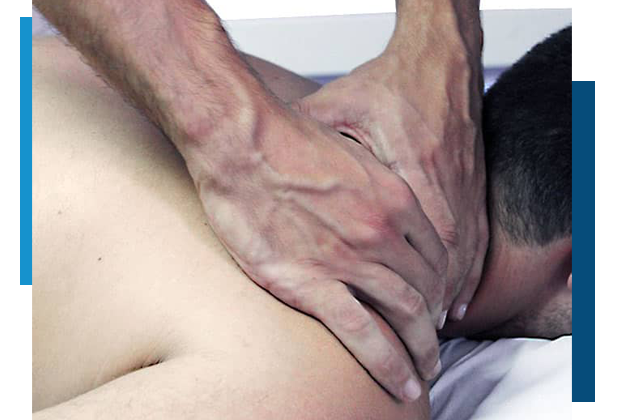
Osteopathy is a holistic approach to health that emphasizes the interconnection between the body’s systems and how they work together. At York-Med Physiotherapy & Wellness Centre, we offer osteopathic treatments to restore balance and promote overall well-being by addressing not just the symptoms but the underlying causes of discomfort and dysfunction. Our skilled osteopaths use gentle, non-invasive, hands-on techniques that focus on the body as a whole, rather than isolating individual symptoms or injuries.
Osteopathy is a form of alternative medicine that takes a comprehensive approach to health care. It is based on the principle that all body systems are interconnected, and when one area of the body is injured or under stress, it can impact other parts. By focusing on the body’s structure and function, osteopathic treatment aims to restore balance, improve mobility, reduce pain, and promote healing.
Unlike other alternative treatments such as chiropractic or physiotherapy, osteopathy considers the body’s entire system, addressing not only the area of discomfort but also the surrounding structures that may be contributing to the issue.
Osteopathy is a non-invasive, drug-free, and hands-on therapeutic approach with no known side effects. It is particularly beneficial for patients seeking natural, holistic relief from pain and discomfort. Many patients report a profound sense of relaxation after each treatment session, as osteopathy helps restore proper movement and alleviate restrictions in the body.
Key benefits of osteopathic treatments include:
Pain Relief: Effective for joint, muscle, and nerve-related conditions.
Enhanced Mobility: Improves range of motion and flexibility.
Holistic Healing: Addresses underlying causes of pain, not just symptoms.
Stress Relief: Promotes deep relaxation and alleviates tension.
Improved Function: Enhances overall body function, leading to better physical performance and well-being.
Our Osteopathic Treatment Areas
At York-Med Physiotherapy, we offer osteopathic treatments in four primary fields, each tailored to address specific issues in the body:
Cranial osteopathy focuses on the movement of the skull and its role in the flow of cerebrospinal fluid through the cranial cavity and spinal canal. When the skull’s rhythmic movement is restricted, it can lead to a variety of symptoms, including headaches, stress, sleep disorders, and gastrointestinal problems. Using gentle manual techniques, our osteopaths work to restore normal cerebrospinal fluid flow and reduce stress on the nervous system.
Visceral osteopathy treats dysfunctions in the internal organs, such as the stomach, liver, and intestines. These organs move in specific directions, and any restriction in their movement can lead to various issues, including digestive disorders, headaches, and musculoskeletal pain. Our osteopaths use a light, gentle touch to release restrictions in the abdominal and thoracic areas, improving organ mobility and overall health.
Musculoskeletal Osteopathy (Joint and Muscle Care)
Osteopathy addresses problems with joints and muscles, which are vital for movement and function. When joints or muscles become immobilized or restricted, it can lead to pain and reduced mobility. Our osteopaths use manual techniques to improve joint alignment, muscle flexibility, and overall movement, promoting faster recovery from injuries and preventing further damage.
TMJ osteopathy focuses on the jaw joint and surrounding muscles. By reducing tension and relieving muscle spasms in the jaw, this treatment can help alleviate TMJ disorders such as jaw pain, headaches, earaches, and teeth grinding. Our osteopaths use gentle manipulations to restore balance in the jaw and improve oral motor function.
At York-Med Physiotherapy & Wellness Centre, our team of experienced osteopaths works closely with physiotherapists and other health professionals to create a comprehensive treatment plan tailored to your individual needs. Whether you are suffering from a musculoskeletal injury, experiencing chronic pain, or dealing with stress-related issues, our holistic osteopathic treatments can help you recover and restore balance to your body.
We take a patient-centered approach, thoroughly assessing your condition to determine the most appropriate treatment plan. Each session is designed to address your specific symptoms while promoting overall well-being, ensuring that you achieve the best possible outcomes.
.
If you’re interested in exploring osteopathy as a natural, effective treatment option, York-Med Physiotherapy & Wellness Centre is here to help. Our osteopaths are ready to work with you to relieve pain, restore function, and improve your quality of life.
Contact us today to schedule an osteopathic consultation and discover how osteopathy can support your health journey
© 2020 York-Med Physiotherapy and wellness center | Richmond Hill & Vaughan. All Rights Reserved.
Designed by Magham Agency